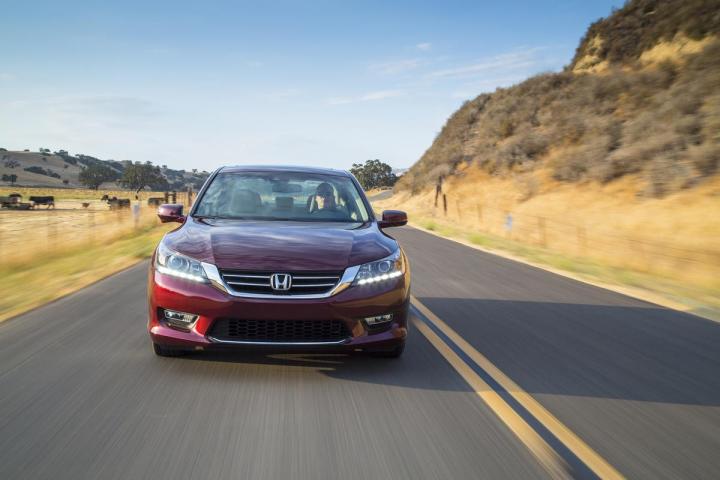
Vehicle-to-Vehicle Communication technology, or V2V, is already giving new meaning to the word “connectivity.” V2V allows cars to sense each other and warns drivers of potential crashes, but Honda is taking things one step further.
In addition to V2V, the Japanese company is testing Vehicle-to-Pedestrian (V2P) and Vehicle-to-Motorcycle (V2M) tech.
These two new permutations of V2V work on the same principle: Dedicated Short Range Communication (DSRC) signals are sent back and forth between objects, showing where they are in relation to each other.
In the case of V2P, signals are sent between a car and a person’s smartphone. The system provides visual and auditory warnings to both the pedestrian and the driver; Honda says this could help reduce vehicle-pedestrian collisions.
To link a phone with a car, Honda uses the phone’s GPS and motion sensor to determine the user’s position. DSRC’s 5.9 GHz band is similar to WiFi, so phones and V2V-equipped cars can communicate relatively easily. Warnings appear on a pedestrian’s phone screen through an app, and on a car’s dashboard through added V2V equipment. Eventually, that tech will likely become another part of a car’s infotainment system.
It could be the perfect tech for a world where people seem to prefer looking at their phones to watching where they are going.
Honda is also adapting V2V to motorcycles as “V2M.” Honda says V2M will help make motorcycles more visible on the road by warning drivers of their presence even when the bikes are obscured in blind spots.
V2V is already getting a major real-life workout in the U.S. Department of Transportation’s Safety Pilot Model Deployment program, which is testing the technology on roads around Ann Arbor, Michigan. Honda is partnering with the DOT on the program.
Eight Honda vehicles are part of the test, along with a handful of motorcycles.
What do you think of V2V and its related systems? Would you want V2V in your vehicle or on your phone?
Editors' Recommendations
- Honda HR-V vs. Honda CR-V
- 2020 Honda CR-V Hybrid offers 38 mpg combined for $28,870
- 2020 Honda CR-V starts at $26,145, hybrid powertrain on the way


